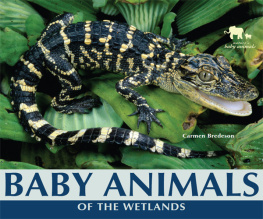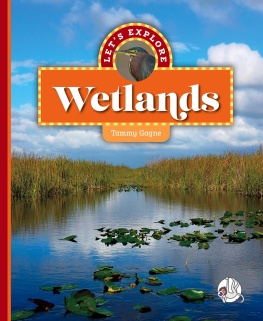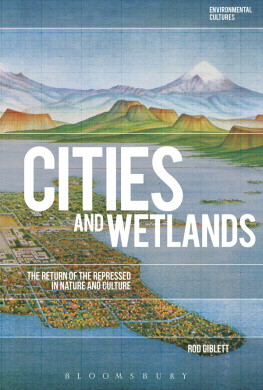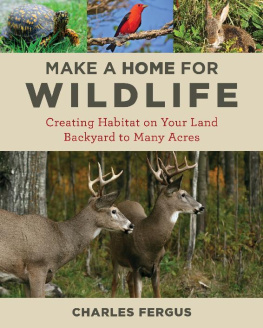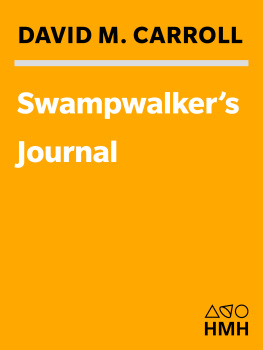Contents
Page List
Guide

IN THE SPIRIT OF WETLANDS
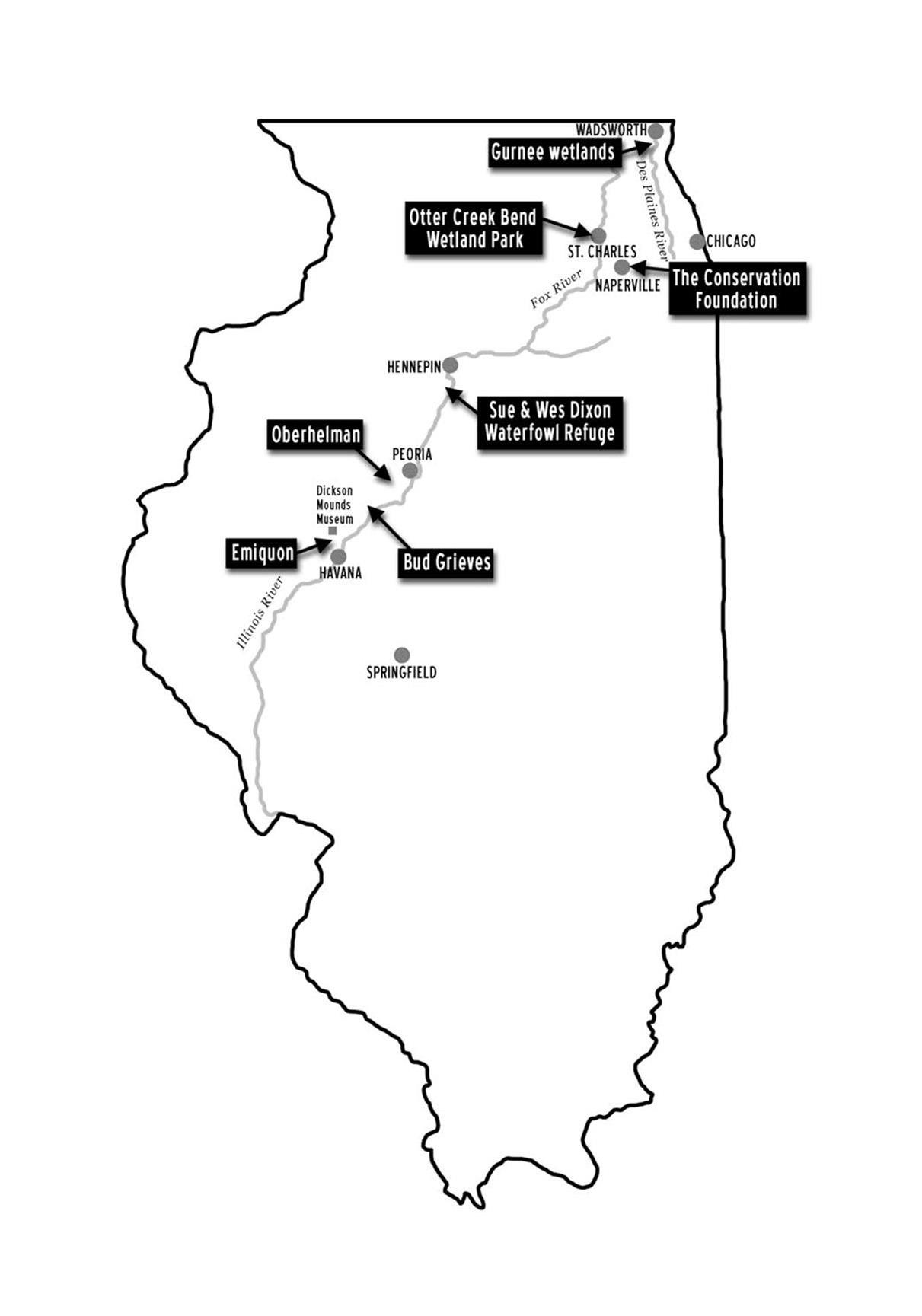
IN THE SPIRIT
OF WETLANDS
REVIVING HABITAT IN THE
ILLINOIS RIVER WATERSHED
Text by
CLARE HOWARD
Photographs by
DAVID ZALAZNIK
3 Fields Books is an imprint of the University of Illinois Press.
2022 by Clare Howard and David Zalaznik
All rights reserved
Library of Congress Cataloging-in-Publication Data
Names: Howard, Clare (Journalist), author. | Zalaznik, David, author.
Title: In the spirit of wetlands: reviving habitat in the Illinois river
watershed / text by Clare Howard; photographs by David Zalaznik.
Description: Urbana: University of Illinois Press, [ 2022]
Identifiers: LCCN 2021061666 (print) | LCCN 2021061667 (ebook) |
ISBN 9780252086625 (paperback) | ISBN 9780252053559 (ebook)
Subjects: LCSH: Wetland restorationIllinois River Watershed. |
Watershed restorationIllinois River Watershed. | Wetland biodiversity
conservationIllinois River Watershed. | Illinois River Watershed
Environmental conditions. | BISAC: NATURE / Environmental
Conservation & Protection | NATURE / Ecosystems & Habitats /
General
Classification: LCC QH105. I3 H69 2022 (print) | LCC QH105. I3 (ebook) |
DDC 333.91/8153097735dc23/eng/20220111
LC record available at https://lccn.loc.gov/2021061666
LC ebook record available at https://lccn.loc.gov/2021061667
To our parents who believed in looking at problems from
new perspectives in order to see new solutions.
For hundreds of years, people generally thought of swamps, bogs, marshes, and
moors as unproductive landeven menacing and foreboding land. When industrious
ous developers and farmers virtually exterminated wetlands with dikes, drainage,
pumps, and chemicals, few advocates protested because there was no understanding
anything of value was being destroyed.
But as evidence accumulated about the essential role of wetlands in the
environment, some people became captivated with this vision and undertook a challenge
attempting to resuscitate these backwaters. In many cases, it was trial and error,
learning by failure, frustration, and persistence.
Then the forgiving and enduring nature of wetlands responded, and they began
to re-emerge. Seeds dormant for a hundred years germinated.
Some restored wetlands are visual feasts, with water stretching to the horizon
like a vast inland sea. Some are shy, almost invisible, hiding among tall grasses.
Just as each wetland has its own personality, so do the people who have worked
for decades restoring them and helping them once again resume their essential role
in the natural world. In the Spirit of Wetlands recounts the tales of these restorers
and the reemergence of the wetlands they love.
These restored wetlands now have step- siblings: constructed wetlands. This
book also engages with these creatorspeople who construct wetlands where none
existed before, and, almost miraculously, the spirit of wetlands emerges on these
sites as well.
University of Illinois Press
Fall 2021
CONTENTS
ELIIDA LAKOTA AND MICHAEL WIANT
SUE AND WES DIXON
BUD GRIEVES
JOHN RYAN
MAYOR KRISTINA KOVARIK
DOUG BLODGETT
DOUG AND DIANE OBERHELMAN
JOHN FRANKLIN AND JIM FULTON
MIKE MILLER AND JIM KLEINWACHTER
PREFACE
Restored wetlands are like people. Each one has its own character and personality.
Some stretch magnificently from horizon to horizon. Some hide among grass and
timber. Some are most splendid shimmering in moonlight; some find their splendor
in the long shadows of a setting sun. There is a mist that rises from wetlands on
cool evenings late in summer and shrouds the landscape in mystery.
Some wetlands are so overtly beautiful they elicit spontaneous proclamations of
awe, but some are so quiet and unpretentious they are mistaken for fields of weeds.
All the wetlands featured in this book reflect the magic, dedication, study, and
hard work of the people who restored them. There is a bond between these people
and their wetlands. One wetland creator has told his wife that when he dies, he
wants some of his ashes scattered on his first wetland project.
One restorer of wetlands often finds his work takes him hours from his home
base, but at the end of a trip, he likes to stop by one particular restored wetland near
his house. They reconnect like old friends. He likes to look out over the wetland
and reflect that this is his legacy just as surely as his children and grandchildren.
The people featured in this book embody the spirit of wetlands.
IN THE SPIRIT OF WETLANDS
INTRODUCTION
For hundreds of years, people generally thought of swamps, bogs, marshes, and
moors as unproductive land. The moors of England have a menacing, foreboding
connotation. Unproductive land covered with native grasses and forbs looks messy
and undervalued to an uninformed eye compared with weed-free fields of row crop
production. The first looks lazy; the second looks industrious. What if we flip that
perception? By transforming that thinking, we learn to understand wetlands as
productive, restorative, sustaining, mitigating, nurturing, and beautiful. The benefit
of wetland restoration is not measured in a conventional bank statement but in a
societys sustainability and well-being.
Its impossible not to anthropomorphize a restored wetland and feel overwhelmed
by its kindness. Agriculture and development can kill wetlands by draining them,
diking them, saturating them with chemicals, and building over them. Yet even
a century after that destruction, when a wetland restorer comes along and starts
undoing the past, the forgiving spirit of a wetland emerges. Seeds dormant for one
hundred years begin to sprout. Water slowly returns to ancient channels. Insects
and waterfowl recognize the transformation and return. Vegetation and soils work
their alchemy and resume their role filtering and cleaning toxins from the water.
It is this transformative power of wetlands that triggered a passion in the people
featured in this book. These people have come to understand wetlands in a way that
has changed their view of the environment and, in turn, their view of the world.
Their understanding is hard to quantify and define because it is personalized
and unique. It evolved over decades of observing, studying, hiking, moving dirt,
planting seeds, and feeling the life pulse of rivers and streams, bogs and seeps. In
every case, these are people still listening and learning from the lessons wetlands
Introduction
patiently teach. These are people who understand wetlands hold answers to questions
not yet asked.
In one case, understanding came with the radical decision to sell ownership in
a 6-generation global family business and start a new company based on a yet-untested
theory about wetlands. In another case, it came from watching the agony of


